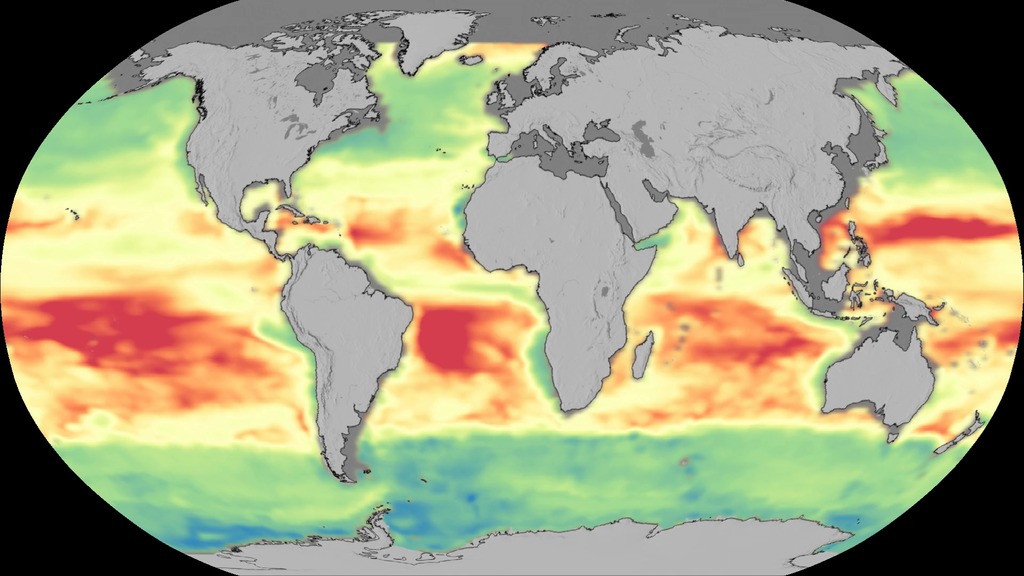Dwindling Diatoms

A NASA study shows a decline in populations of tiny plants in the world's oceans.
Earth's oceans teem with microscopic plants called phytoplankton. But according to a new NASA study, populations of diatoms, the largest type of phytoplankton algae, have declined more than 1 percent per year from 1998 to 2012. Phytoplankton are an essential base of the marine food web and absorb carbon dioxide dissolved in the ocean that originally came from the atmosphere. The tiny organisms occupy the uppermost layer of ocean water, called the mixed layer, where waves and currents continually churn, drawing up nutrients from a deeper layer of water below. Scientists say the phytoplankton declines observed over the 15-year study period are due to the mixed layer becoming shallower, which results in fewer nutrients reaching the diatoms. The reduction in population may reduce the amount of carbon dioxide drawn out of the atmosphere and transferred to the deep ocean for long-term storage. Watch the video to learn more.
Learn more about the study and how NASA monitors Earth's oceans from space in this video.

Using a model based on satellite and field measurements, scientists created maps of diatom populations to see how levels were changing over time.

Areas in red above indicate where diatom levels decreased from 1998 to 2012. Significant losses are seen in the oceans of the Northern Hemisphere.

Areas in purple above indicate where the mixed layer depth shallowed over the course of the 15-year study period.
For More Information
See NASA.gov
Credits
Please give credit for this item to:
NASA's Goddard Space Flight Center
-
Writer
- Ellen T. Gray (ADNET Systems, Inc.)
-
Producer
- Sophia Roberts (USRA)
-
Animators
- Trent L. Schindler (USRA)
- Krystofer Kim (USRA)
-
Scientist
- Cecile S. Rousseaux (USRA)
Release date
This page was originally published on Thursday, September 24, 2015.
This page was last updated on Wednesday, May 3, 2023 at 1:49 PM EDT.
